“Core on deck” – Analysis begins
18 March, 2019
Dr Claus-Dieter Hillenbrand is participating in International Ocean Discovery (IODP) Expedition 379 to the Amundsen Sea, West Antarctica, aboard the drill ship JOIDES Resolution. In this blog he tells us more about what happens once a sediment core has been recovered from the seafloor.
After we hear “core on deck” ring out from the loudspeaker system, the technicians carry the core to the so-called “catwalk”, where the core in its transparent plastic liner is cut into 1.5 m long sections, sealed with end caps and labelled. At this point, scientists take the first samples for analysis. These samples include sediment from the “core catcher” – a device at the bottom of each core that prevents the sediment column from slipping out after collection., Micropaleontologists on board scan this sediment under the microscope for the fossilised microorganisms including calcareous foraminifera shells. Samples are taken to investigate the chemical composition of pore waters within the seabed, and the sediment is examined to determine the presence and composition of microorganisms, such as bacteria, which are actively living tens to hundreds of meters deep in the seabed. The latter investigations are potentially very important because most of these unexplored microorganisms do not occur anywhere else on our planet, and may provide the base material for future antibiotics.
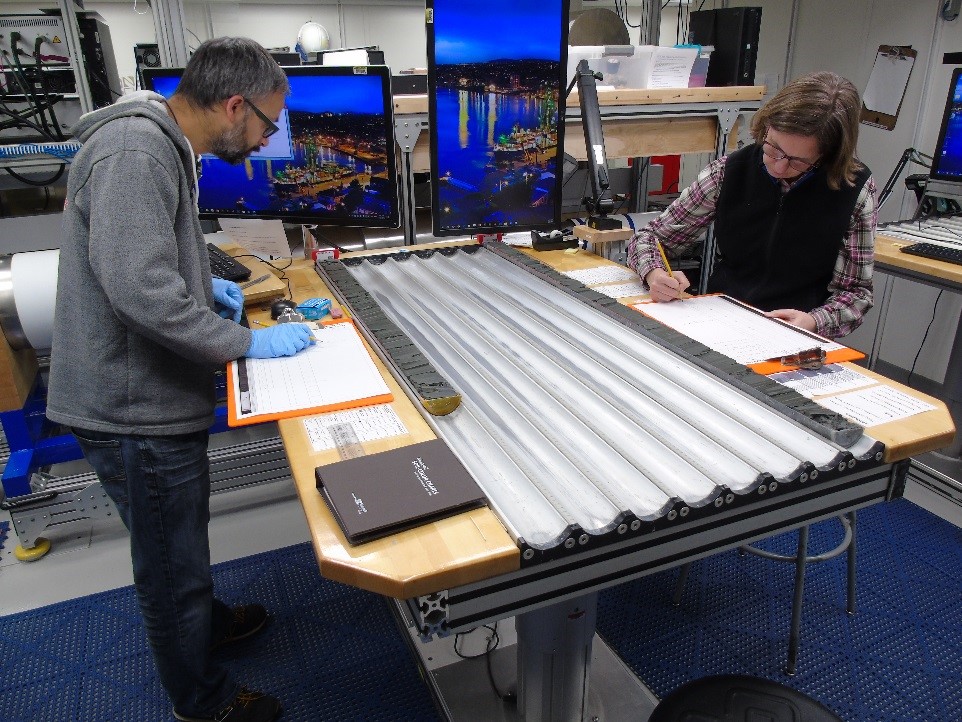
The cores are then taken from the catwalk to the “core lab”. Here, they are X-rayed by the sedimentologists – the largest team of scientists on board, which includes me. Afterwards the whole cores are handed over to the physical properties specialists, who measure some basic properties of the sediments, such as their density, sound velocity (for matching sediment layers from below the seafloor to distinct reflectors visible in crossing seismic profiles), and natural radioactivity. The latter is extremely small and therefore requires highly sensitive detectors for measuring but gives a first idea about the grain size and mineralogical composition of the sediments. The next step in the processing of a core section is the splitting into an archive and a working half. This is carried out by the IODP technicians.
The working half is laid out for the scientists from the different disciplines (on our expedition these are researchers of palaeomagnetic sediment properties, geochemists, sedimentologists, physical properties specialists and micropalaeontologists). They stick little flags beside the working half of a core section to mark the intervals they like to sample. The various “claims” are then discussed and agreed upon before small discrete samples (up to the size of a sugar cube) are taken. Following this, some of the working halves of the sections are given to the physical properties specialists, who undertake further analyses on them that can only be carried out on the sediment directly.
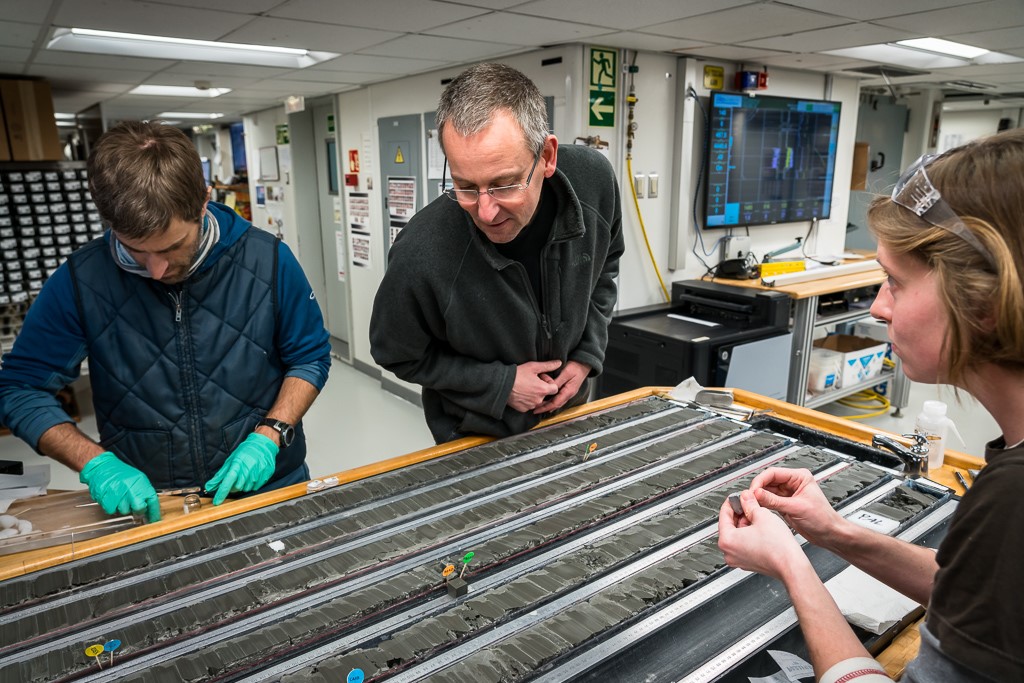
The sedimentologists take care of the archive halves of the cores. First, they image the sections at high resolution before they start describing them. The descriptions primarily record the general composition, such as grain size, content of microfossils and sedimentary structures. The structures found includes those formed by ocean currents or by animals that burrowed the seafloor in search of food. The sedimentologists also record the abundance and source of so-called “drop stones”. These are several millimetre to centimetre sized stones that have been released from melting icebergs, originating from Antarctica. The stones settle through the water column down to the seafloor, where they are buried by other sediment over time.
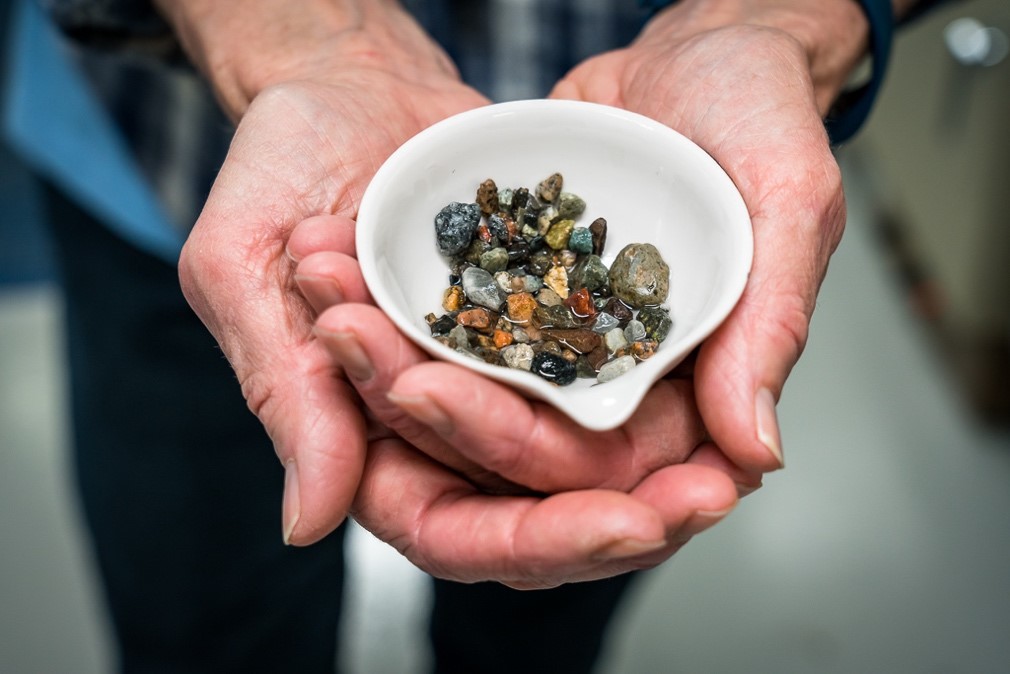
Using the information gathered from the cores, we can draw valuable conclusions about the environmental conditions at the time when the sediments were deposited. The data can also tell us about past ocean currents and sea surface temperature, historic ice sheet and sea-ice extent, and provides information about previous ice sheet behaviour including phases of rapid ice-sheet retreat.
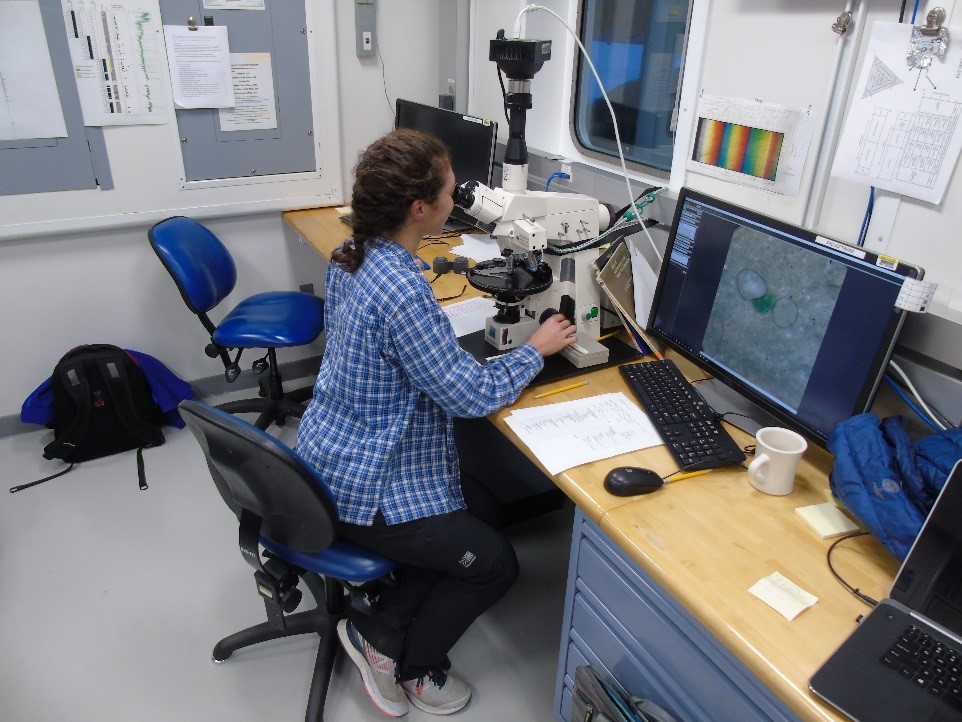
After the visual description the sedimentologists scan the archive halves for sediment colour and magnetic properties (i.e. the content of minerals that can be magnetised) before handing them over to the palaeomagnetics specialists. These researchers investigate the cores for past reversals of the Earth’s magnetic field, which are recorded in the sediments. Because the ages of these reversals are well known, the measurements help to identify the time when the sediments were deposited.
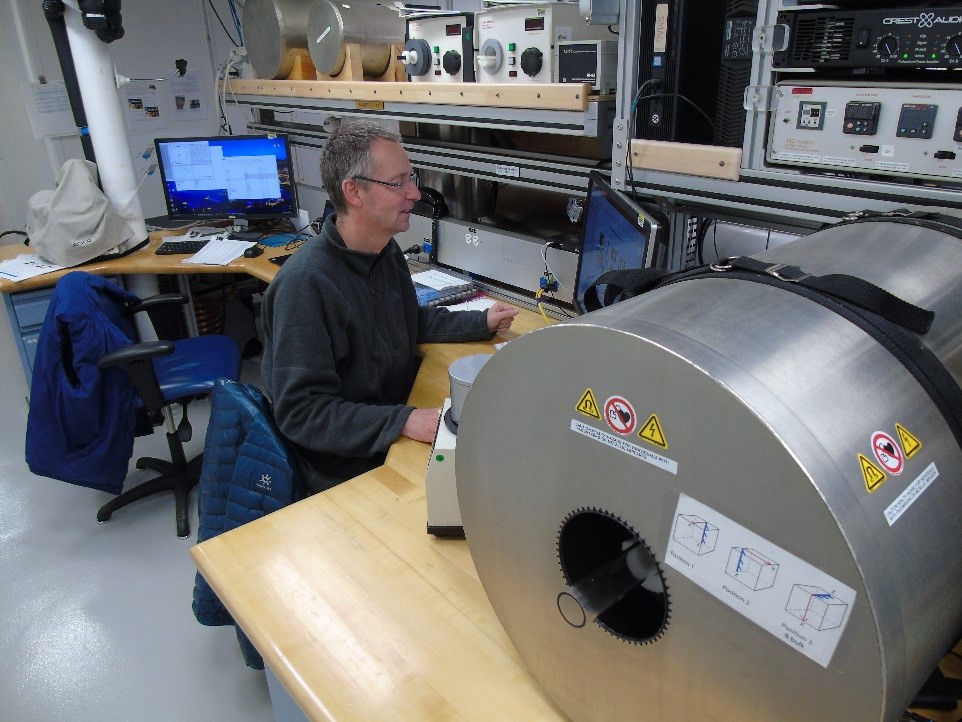
When all the various analyses are finished both the working and the archive halves of the cores are packed and stored in huge refrigerators on board of the JR. After the end of our expedition, the cores will be shipped in refrigerated containers to a repository in College Station in Texas (U.S.A.), where we will meet to take more samples for future analysis.